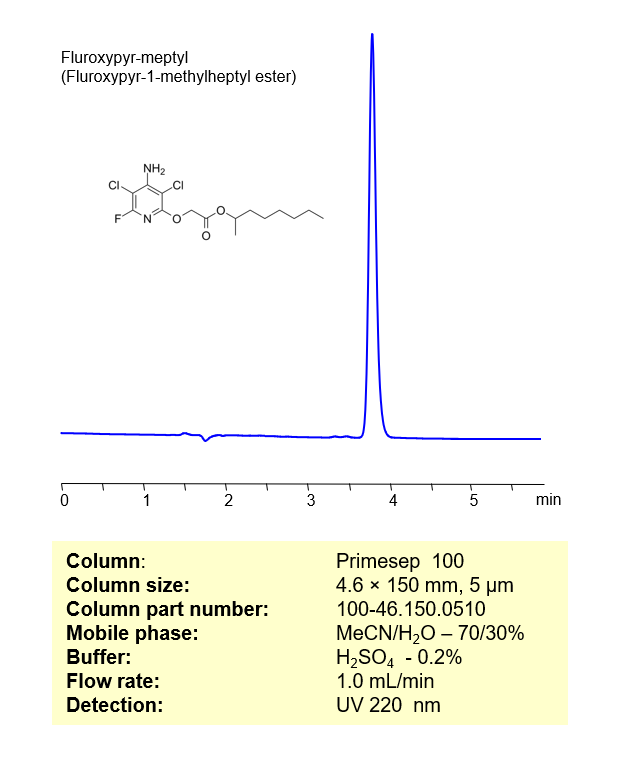HPLC Method for Separation of Fluroxypyr-meptyl on Primesep 100 by SIELC Technologies
Separation type: Liquid Chromatography Mixed-mode
Fluroxypyr-meptyl is a herbicide used for the control of broad-leaved weeds in cereals, pastures, and non-crop areas. It belongs to a class of herbicides known as synthetic auxins.
Auxins are a class of plant hormones which are involved in the regulation of plant growth. Synthetic auxins like fluroxypyr mimic the action of natural auxins but disrupt the normal growth processes in the target plants, leading to their death.
Fluroxypyr-meptyl is effective against a range of weed species, including some that are resistant to other types of herbicides.
This herbicide can be retained and analyzed on a mixed-mode Primesep 100 column with a mobile phase consisting of water, Acetonitrile (MeCN), and Sulfuric acid (H2SO4). This analytical method can be UV detected at 220 nm with high resolution and peak symmetry.
LOD was determined for this combination of instrument, method, and analyte, and it can vary from one laboratory to another even when the same general type of analysis is being performed.
High Performance Liquid Chromatography (HPLC) Method for Analysis of Fluroxypyr-meptyl
Condition
| Column | Primesep 100, 4.6 x 150 mm, 5 µm, 100 A, dual ended |
| Mobile Phase | MeCN/H2O – 70/30% |
| Buffer | H2SO4 – 0.2% |
| Flow Rate | 1.0 ml/min |
| Detection | UV 220 nm |
| Peak Retention Time | 3.82 min |
| LOD | 0.1 ppm |
Description
| Class of Compounds | Herbicide |
| Analyzing Compounds | Fluroxypyr-meptyl |
Application Column
Primesep 100
Column Diameter: 4.6 mm
Column Length: 150 mm
Particle Size: 5 µm
Pore Size: 100 A
Column options: dual ended






